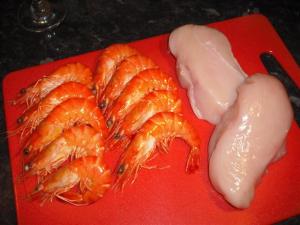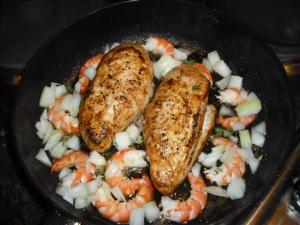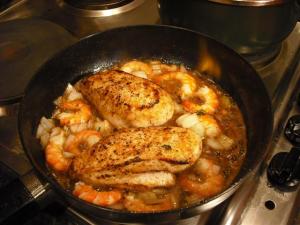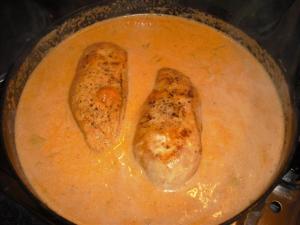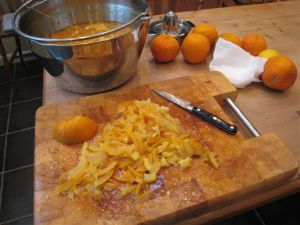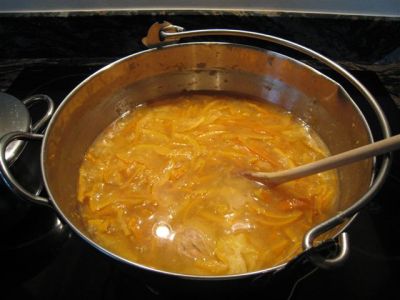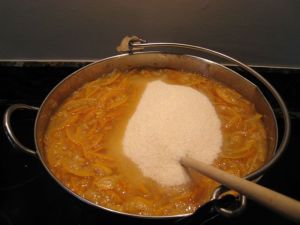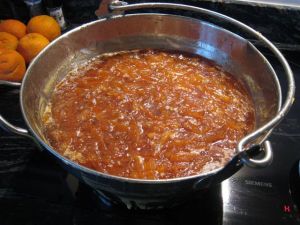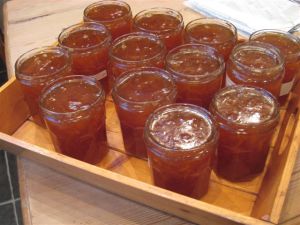After making the Tomato Sauce, I got all the other ingredients ready to make this Floyd dish. I had no idea how this was going to turn out, so was definitely looking forward to the eating stage and trying it out!
The recipe said that it serves 4, due to it being a chicken breast per person. As there were only 2 of us we only used 2 breasts but kept the rest of the recipe the same, so there was lots of sauce left over. Next time I make this recipe, I will halve the sauce ingredients too.
You can tell there is a real French heritage behind this dish, using the Langoustines and Cognac and the final results were typically French too – flavours that I wouldnt normally put together to create a fancy and very rich tasting Floyd dish. This is not a recipe you want to make if you are on a diet. Having said that, we both polished the meal off and wished there had been a bit more chicken and a few more langoustines too. Floyd says to serve with boiled rice, which we did, but next time I think I will serve it with green vegetables and french green beans.
Serves 4
Ingredients:
4 Chicken Breasts
4 Langoustines per person - Large Crevettes or Whole King Prawns can be used
1 tbsp Onion, finely chopped
1 Clove Garlic, chopped
1 tbsp Parsely, chopped
1 cup of Tomato Sauce
½-1 cup of Double Cream (I used ½ cup and this was very creamy)
2 oz Butter
1 large glass White Wine
1 measure Cognac or Brandy
Pinch Thyme
Salt and Pepper
1 tbsp jellified Chicken Gravy
1 tsp Dry Sherry
1 Season the chicken and fry in the butter for 10 minutes.
2 Add the onions, garlic, thyme and langoustines (I removed the shells but the recipe didn’t say what to do).
3 Flame with the Cognac and add the white wine. Allow to simmer for a few moments.
4 Add the tomato sauce and the cream and if possible a tablespoon or two of jellified gravy. Taste the sauce, it should not be too creamy.
5 Season with salt and pepper. At this stage a teaspoon of sherry could be added to sharpen the sauce a little.
Serve with plenty of boiled rice and a green salad.
Enjoy!

